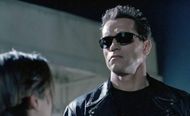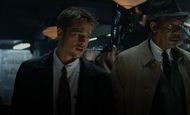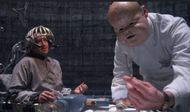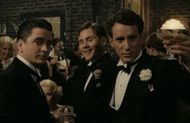Alternate endings reshape the entire meaning of what a movie would say: sometimes even altering how we remember its characters and themes in our minds. These new conclusions offer an alternative view of how slight variations in terms of the story could give way to an entirely alternate story. Alternate endings can even change the tone of an entire film. From weird twists to heart-wrenching choices, they make audiences sit and wonder how things may have turned out. In the article below, we get into 17 times alternate endings completely changed the movie's trajectory.
1) Blade Runner (1982)

In contrast, the alternate ending provided much more hope than what viewers received from the theatrical version of Blade Runner. In the original cut, Deckard and Rachael drive into the dystopian future while a different final scene was planned for that one. Ridley Scott's concept depicted the movie with a more desolate ending where Deckard found out about Rachael's fate. This change would have made the film darker, but the studio forced a more optimistic conclusion instead. The hopeful note in the final version has since been regarded as a fitting end, contrasted with the bleakness of the world that the film is set in.
2) Clerks (1994)

The ending of Kevin Smith's indie classic Clerks was far darker in the original cut. In the alternate version, Dante Hicks is murdered by convenience store robbers who find him closing up for the night. It was a grim conclusion to life's randomness and fragility, but the rest of the movie was so irreverent in its humor that it didn't quite mesh. Smith eventually settled on a lighter ending, leaving the fate of Dante open while the film stayed as just a slice-of-life comedy. This made Clerks remain a cult classic without alienating its fan base.
3) The Descent (2005)

Your description of The Descent and its alternative ending is mostly correct, but it can be refined for clarity and accuracy. Here's a clearer and more polished version: The alternative ending of The Descent significantly altered the fate of the protagonist, Sarah. In the theatrical cut, Sarah escapes from the cave, only to be confronted by a haunting vision of her dead friends before the screen fades to black. This version suggests she survives physically but remains psychologically scarred. However, in the original UK ending, the tone is far more ambiguous. After seemingly escaping, Sarah awakens to find herself still trapped deep within the cave. Her visions of freedom are revealed to be hallucinations, and the film ends with her surrounded by darkness and despair. This ending leaves her survival uncertain, emphasizing a descent not only into the cave but also into madness.
4) Interstellar (2014)

In an alternative ending of Christopher Nolan's Interstellar, Cooper's reunion with his daughter, Murph, would have been much quieter and more understated. Originally, the plan was for Cooper to remain in space, leaving Earth and his family behind. Nolan has instead chosen an emotionally loaded end as it speaks about love and love is far bigger than distance, or time. This change deepened the emotional impact of the film, as it was not only a survival story but a connection, love, and bond that transcended dimensions, striking a chord in the viewers' hearts.
5) Clue (1985)

The comedy-mystery Clue stands out as it has multiple alternate endings, each providing a unique solution to the whodunit. In theaters, the audience was shown a random one of three possible endings, where different characters were revealed as the murderer. However, the DVD release has shown all three of the ending scenes back to back along with the caption "But here's what really happened." This sort of cheeky alternate ending complements the film's eccentric theme so that one enjoys as many possibilities while also wondering what might happen.
6) Terminator 2: Judgment Day (1991)

The alternate ending of Terminator 2 presented a much darker destiny for the humans. In the original cut, Sarah Connor views a brighter future for her son John, since the world has avoided the apocalypse. The original ending was, however, to demonstrate that judgment day was inevitable and could not be stopped by Skynet's destruction. More importantly, the brighter ending is adopted with the machines' threat fully obliterated, thus leaving the characters in hope. This brought about a better ending than could have been obtained from a grim ending that would have otherwise made the film less iconic.
7) Seven (1995)

David Fincher's Se7en explored a grim and shocking conclusion, but an alternate ending offered a slightly different outcome for its characters. In the theatrical version, Detective Mills kills John Doe in a fit of rage after discovering his wife's tragic murder, thereby fulfilling Doe's twisted plan to embody the seventh sin—wrath. In an alternate draft, Detective Somerset intervenes, stopping Mills from pulling the trigger. Instead, Somerset himself executes John Doe, portraying it as a reluctant act of sacrifice to spare Mills from falling into Doe's trap. While this alternate ending could have altered the story's tone, Fincher ultimately chose the theatrical version for its unflinching depiction of humanity's vulnerability to evil. This final version left a more haunting and lasting impression on audiences.
8) Rocky Balboa (2006)

The alternate ending of Rocky Balboa gives the iconic boxer a more conventional victory. In this version, Rocky wins against Mason Dixon, thus winning more traditionally and bringing closure to his boxing career. The theatrical ending is much more reflective, though; Rocky loses the fight but wins a personal battle of self-worth and redemption. This transition brings out the character's emotional development; in short, winning isn't everything; it's a personal triumph. The actual ending gave the audience something that the original could have but failed to do: leaving fans with a stronger, lasting impact.
9) Unfriended: Dark Web (2018)

Unfriended: Dark Web was the most headline-grabbing aspect – it had two completely alternate endings. In one ending, Matias is allowed to be killed by some dark web overlords due to the dangers of the internet, which lurks in certain corners. In the second ending, Matias survives for a brief moment at least, but uncertainty hovers over his head like a sword. Different versions were added to the unsettling film. The audiences debated which of the two versions they'd prefer. Both endings drove home the movie's theme of paranoia and the darker side of modern technology.
10) 1408 (2007)

In the alternate ending of 1408, the story becomes sinister. Instead of the hotel room appearing to be destroying itself at the climax, Mike Enslin, played by John Cusack, is locked in the room forever, succumbing fully to the terror inside. The film would have been even darker and creepier. But with the theatrical ending, Mike gets out of the room, emotionally scarred but leaving a chance for hope. The decision to end on a softer note made the movie more accessible, while the alternate ending would have sealed its hauntingly tragic tone.
11) Fatal Attraction (1987)

Alternate versions of Fatal Attraction concluded differently with the approach to the death of Alex Forrest in Fatal Attraction. In the theatrical version, there is a self-defense killing of the mistress by Dan's wife. Then an alternate version features Alex having killed herself while framing the whole case against Dan, where the ending remains unsolved and full of haunting suspense. While the original ending was bold, test audiences preferred the more action-packed and cathartic conclusion, which became one of the most iconic finales in thriller history.
12) Brazil (1985)

Terry Gilliam's Brazil was known for its highly debated alternative ending. The theatrical version ends with Sam stuck in a dream, where he fantasizes about a happy escape while reality reveals his torture. An alternative cut—dubbed the "Love Conquers All" version—had given Sam a victorious and hopeful ending. This optimistic view did not sit well with Gilliam's satirical vision of dystopia; therefore, the darker ending remained. The final version was more thought-provoking, in keeping with the themes of oppression and the fragility of human hope in the film.
13) Once Upon a Time in America (1984)

The alternate ending of Sergio Leone's Once Upon a Time in America would have changed the very enigmatic tone of the movie. The original cut featured Noodles with an elusive, mysterious smile after being reunited with Max. An alternate version cleared all the unanswered questions of this ambiguous finale, yet it was the ambiguity that enhanced the poetic and melancholic tones of the film. The final version was subsequently hailed as a work of genius in storytelling, inviting the viewer to unravel the mystery for himself.
14) Wayne's World (1992)

Known for their goofy humor and the numerous catchy phrases, the alternate ending of Wayne's World shifts sharply into darker absurd terrain. In this one, Wayne and Garth's show is an abysmal failure that throws them into a miserable future still stuck in the local access TV small-time thing. This dark ending was replaced by the theatrical ending, where Wayne and Garth win, reconnecting with their audience and living out their rock 'n' roll fantasies. The ending chosen maintained the feel-good quality of the film and kept it as a comedy classic.
15) I Am Legend (2007)

I Am Legend has its alternate ending flipped. While in the theatrical version, Robert Neville sacrifices himself with a heroic explosion that kills him in order to save the cure and humankind from the mindless monsters of the Darkseekers, the alternate ending depicts them as only trying to save one of their kin, making them slightly complex and humane. It finally dawns on Neville that he is the villain and leaves quietly. This shocking twist completely changes the nature of heroism and overhauls the entire moral heart of the story.
16) Army of Darkness (1992)

The alternate ending in Army of Darkness is how Ash's journey has his end as darker and ironically lighter. Here, Ash consumes an elixir so as to sleep through the ages and awaken in his native time. However, as it often happens in many instances of Ash's foolish nature, he mistakenly measured the potion and, of course, woke up post-apocalypse in a desert, and it was too much bleaker than what people anticipated to watch. The campy tone of the film was embraced with the theatrical ending, as Ash triumphantly returns to his own time and battles Deadites in a department store, giving fans a more satisfying, heroic conclusion.
17) 28 Days Later (2002)

The alternate ending of 28 Days Later is much more ominous. Here, Jim, having been badly injured trying to escape from the compound with the military, ultimately dies in the hospital and Selena and Hannah set off into the unknown to fend for themselves. This bleak ending would fit the grim tone of the film but was eventually abandoned in favor of a more positive ending where Jim survives, and the three find signs of rescue. The chosen ending gave hope to the audience amidst all the chaos and softened the relentless despair of the film.
Love movies? Try our Box Office Game and Movie Grid Game to test your film knowledge and have some fun!
